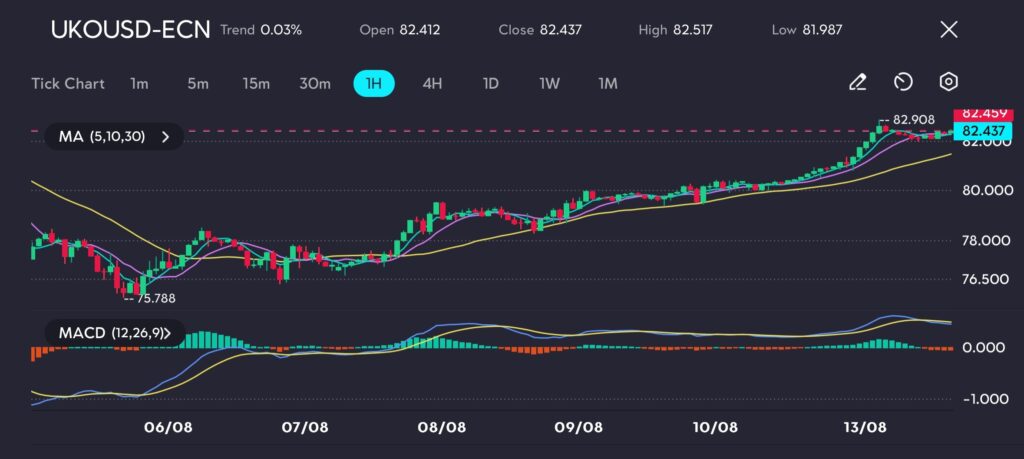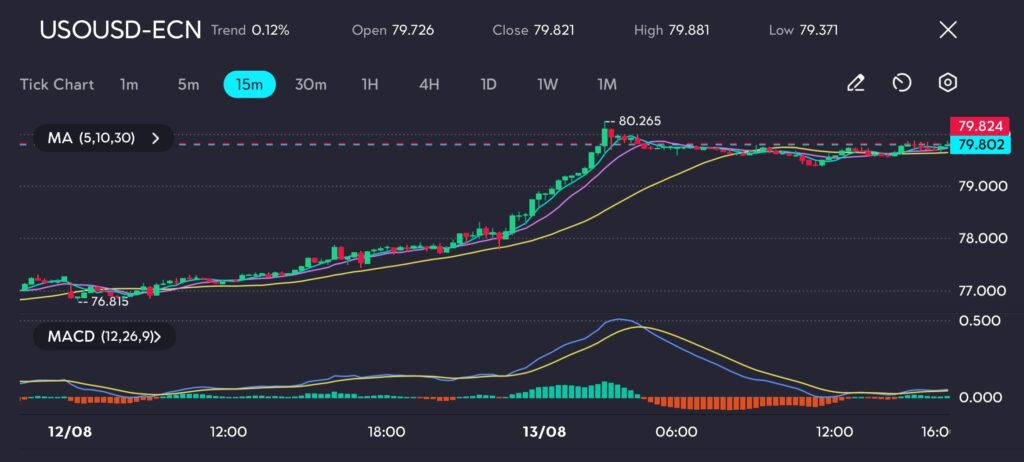Key Points:
- Brent crude oil corrected to $81.52 per barrel, while the US West Texas Intermediate (WTI) crude oil dropped slightly to $79.33 per barrel.
- The 2024 demand forecast cut by OPEC, driven by weaker expectations in China, weighed on oil prices.
- Market participants are cautious ahead of US inflation data and ongoing geopolitical tensions in the Middle East, which could further impact oil prices.
This is a follow up article to: Oil prices tick up on sharp fall in US crude oil inventories
Oil prices retreated and broke a five-day winning streak as the market’s focus shifted back to demand concerns. The global benchmark Brent crude oil (Symbol: UKOUSD) to $81.52 per barrel, while US West Texas Intermediate (WTI) crude oil (Symbol: USOUSD) slipped to $79.33 per barrel.


Picture: Minor decline in oil prices as OPEC cuts 2024 demand forecast, as observed on the VT Markets app.
This pullback follows significant gains on Monday, where Brent rose over 3% and WTI gained more than 4%. However, the optimism was short-lived as the Organisation of the Petroleum Exporting Countries (OPEC) revised its global demand forecast for 2024 downward.
The revision is largely attributed to softer expectations for demand growth in China, particularly due to slumping diesel consumption and ongoing challenges in the property sector.
Impact of the OPEC forecast revision
OPEC’s decision to cut its 2024 demand forecast marks the first revision since July 2023. The adjustment highlights the challenges faced by OPEC+ as they prepare to raise production in October. The reduced forecast underscores the possibility of a less tight oil market, which could pressure prices further in the coming months.
As the Chinese economy struggles, particularly in the property sector, concerns have been raised about the country’s ability to meet previous demand expectations. This, combined with lagging diesel consumption, has led to a more cautious outlook for global oil demand.
Geopolitical tensions further dampen market sentiment
In addition to demand concerns, market sentiment remains fragile ahead of the upcoming US inflation data. Investors are wary that an overly depressed Consumer Price Index (CPI) reading could heighten fears of an economic downturn, potentially dampening oil demand.
Further, the US is preparing for possible significant attacks by Iran or its proxies in the Middle East, which could disrupt global crude supplies and drive prices higher. An attack could lead to US embargoes on Iranian crude exports, affecting up to 1.5 million barrels per day of supply.
Oil market outlook and opportunities
Such a dip in oil prices could be a buying opportunity if geopolitical tensions escalate and supply concerns take center stage. However, traders should remain cautious, as ongoing demand uncertainties, particularly related to China, could lead to further price volatility. Monitoring key economic indicators and geopolitical developments will be crucial in making informed trading decisions.









